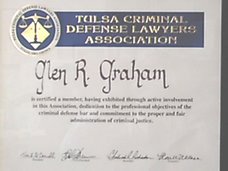Milgram Death Shock Experiment - Obediance to Authority
Even if Violates "Morality"
67.5 percent (27 out of 40) of experimental participants administered the experiment's final fatal - death shock of 450-volts, though many were quite uncomfortable in doing so; everyone paused at some point and questioned the experiment, but then never-the-less complied.
The Milgram experiment (Date: 1961)(Obedience to Authority Study) was a famous scientific experiment of social psychology. The experiment was first described by Stanley Milgram, a psychologist at Yale University, in an article titled Behavioral Study of Obedience. The article was published in the Journal of Abnormal and Social Psychology in 1963 and later discussed at book length in his 1974 Obedience to Authority: An Experimental View. It was intended to measure the willingness of a participant to obey an authority who instructs the participant to do something that may conflict with the participant's personal conscience.
Subjects were recruited for the Yale study through newspaper ads and direct mail. The experiments occurred in two rooms in the basement of Linsly-Chittenden Hall on the university's Old Campus. The experiment was advertised as lasting one hour, for which the respondents would be paid $4.50 (approximately $18.71 in 2006). The participants were men between the ages of 20 and 50, from all educational backgrounds, ranging from an elementary school dropout to participants with doctoral degrees.
The participant and a confederate of the experimenter, who was an actor pretending to be another participant, were told by the experimenter that they would be participating in an experiment to test the effects of punishment on learning.
A slip of paper was then given to the participant and another to the confederate. The participant was led to believe that one of the slips said "learner" and the other said "teacher," and that the participants had been given the slips randomly. In fact, both slips said "teacher," but the actor claimed to have the slip that read "learner," thus guaranteeing that the participant was always the "teacher." At this point, the "teacher" and "learner" were separated into different rooms where they could communicate but not see each other. In one version of the experiment, the confederate was sure to mention to the participant that he had a heart condition.
The "teacher" was given a 45-volt electric shock from the electro-shock generator as a sample of the shock that the "learner" would supposedly receive during the experiment. The "teacher" was then given a list of word pairs which he was to teach the learner. The teacher began by reading the list of word pairs to the learner. The teacher would then read the first word of each pair and read 4 possible answers. The learner would press a button to indicate his response. If the answer was incorrect, the learner would receive a shock, with the voltage increasing with each wrong answer. If correct, the teacher read the next word pair.
The subjects believed that for each wrong answer, the learner was receiving actual shocks. In reality, there were no shocks. After the confederate was separated from the subject, the confederate set up a tape recorder integrated with the electro-shock generator, which played pre-recorded sounds for each shock level. After a number of voltage level increases, the actor started to bang on the wall that separated him from the subject. After several times banging on the wall and complaining about his heart condition, the learner gave no further responses to questions and no further complaints.
At this point, many people indicated their desire to stop the experiment and check on the learner. Some test subjects paused at 135 volts and began to question the purpose of the experiment. Most continued after being assured that they would not be held responsible. A few subjects began to laugh nervously or exhibit other signs of extreme stress once they heard the screams of pain coming from the learner.
If at any time the subject indicated his desire to halt the experiment, he was given a succession of verbal prods by the experimenter, in this order:
Please continue.
The experiment requires you to continue, please go on.
It is essential that you continue.
You have no choice, you must continue.
If the subject still wished to stop after all four successive verbal prods, the experiment was halted. Otherwise, it was halted after the subject had given the maximum 450-volt shock three times in succession.
Before the experiment was conducted Milgram polled fellow psychologists as to what the results would be. They unanimously believed that only a sadistic few (0.1%), would be prepared to give the maximum voltage. In Milgram's first set of experiments, 67.5 percent (27 out of 40) of experimental participants administered the experiment's final 450-volt shock, though many were quite uncomfortable in doing so; everyone paused at some point and questioned the experiment, some even saying they would return the check for the money they were paid. No participant steadfastly refused to give further shocks before the 300-volt level.
Variants of the experiment were later performed by Milgram himself and other psychologists around the world with similar results. Apart from confirming the original results the variations have tested variables in the experimental setup.
Dr. Thomas Blass of the University of Maryland Baltimore County (who is also the author of a biography of Milgram, called The Man who Shocked the World) performed a meta-analysis on the results of repeated performances of the experiment. He found that the percentage of participants who are prepared to inflict fatal voltages remains remarkably constant, between 61% and 66%, regardless of time or location (a popular account of Blass' results was published in Psychology Today, March/April 2002). The full results were published in the Journal of Applied Social Psychology (Blass, 1999).
Dr. Thomas Blass of the University of Maryland Baltimore County (who is also the author of a biography of Milgram, called The Man who Shocked the World) performed a meta-analysis on the results of repeated performances of the experiment. He found that the percentage of participants who are prepared to inflict fatal voltages remains remarkably constant, between 61% and 66%, regardless of time or location (a popular account of Blass' results was published in Psychology Today, March/April 2002). The full results were published in the Journal of Applied Social Psychology (Blass, 1999).
The experiments also raised criticism of a more emotional nature, which have more to do with the implications of the experiments than the ethicality of the setup. A participant in the 1961 experiment at Yale writes in Jewish Currents about his early withdrawal as a "teacher", suspicious "that the whole experiment was designed to see if ordinary Americans would obey immoral orders, as many Germans had done during the Nazi period". See: http://en.wikipedia.org/wiki/Milgram_experiment






No comments:
Post a Comment